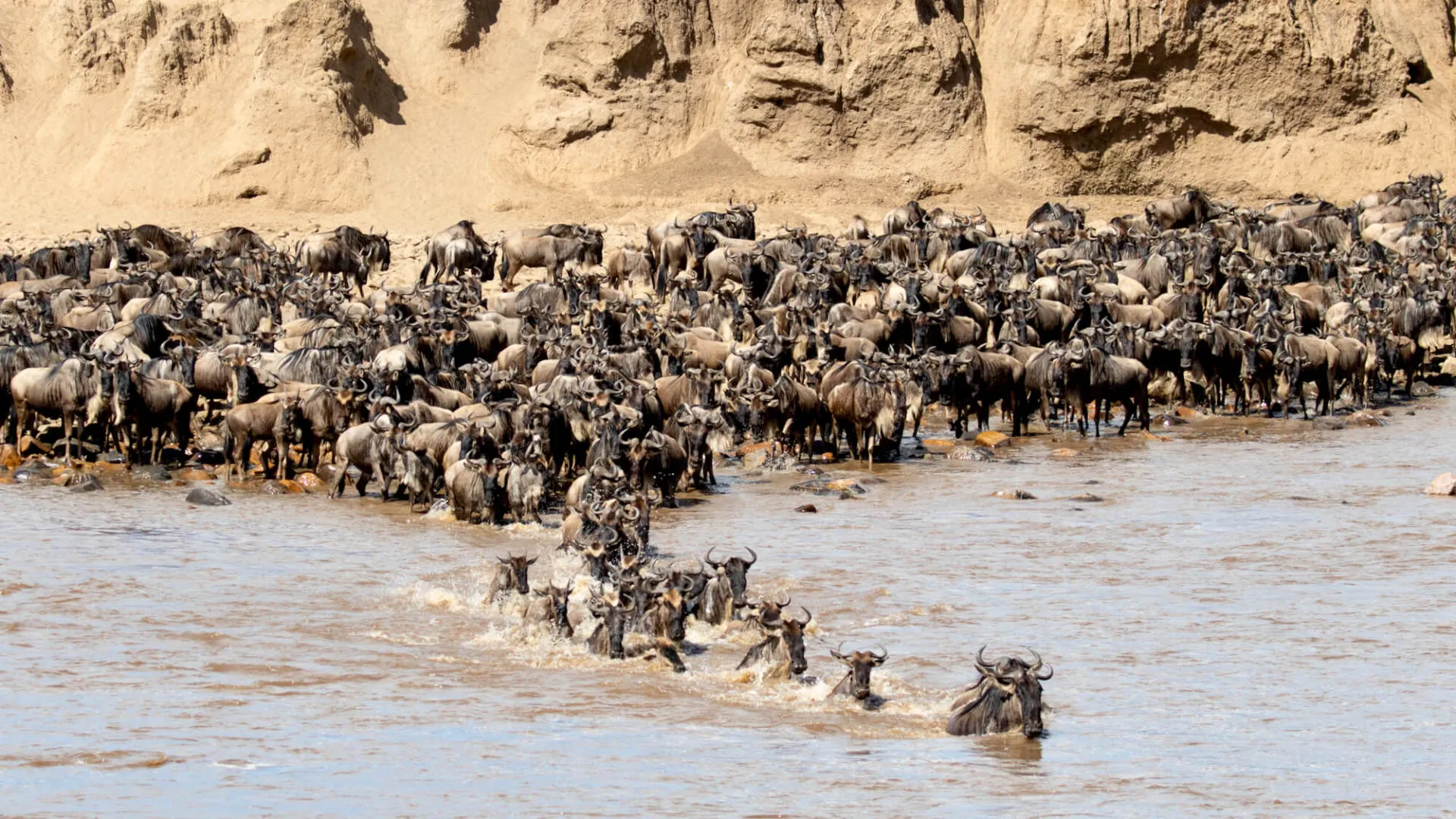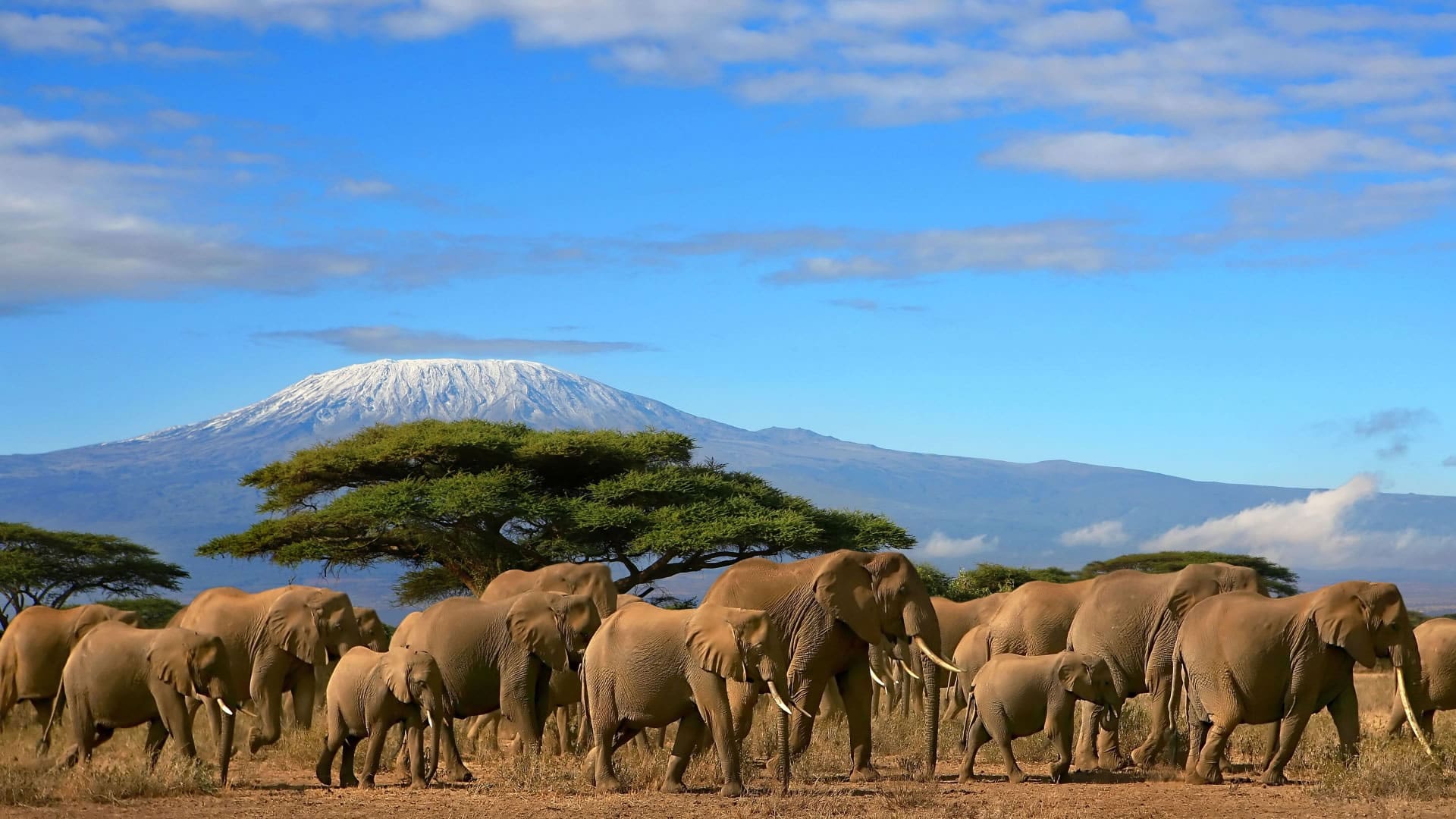Tsavo West National Park, covering 9,065 square kilometers, is one of Kenya’s largest and most diverse parks. It forms part of the greater Tsavo Conservation Area, alongside Tsavo East, and is separated from its counterpart by the Mombasa-Nairobi Highway and the railway line.
Unlike Tsavo East, which is flat and arid, Tsavo West is more rugged and scenic, featuring rolling hills, volcanic landscapes, dense bush, acacia woodlands, and riverine vegetation. The park has a mix of open grasslands and rocky ridges, making it a paradise for photographers and nature lovers.
Wildlife in Tsavo West
Tsavo West is home to the Big Five (elephants, lions, leopards, rhinos, and buffaloes) as well as cheetahs, giraffes, hippos, crocodiles, hyenas, and antelopes. It is famous for its “Red Elephants,” which roll in the park’s reddish soil, giving them a unique rust-colored appearance.
The Ngulia Rhino Sanctuary, located in the park, plays a crucial role in the conservation of the endangered black rhino. With only a few hundred left in the wild, Tsavo West’s efforts to protect them are vital.
Tsavo West is also a birdwatcher’s paradise, boasting over 600 bird species, including the golden-breasted starling, African finfoot, kingfishers, hornbills, and rare migratory birds that arrive between October and April.
Key Attractions
Mzima Springs – A crystal-clear oasis fed by underground water from Chyulu Hills, where you can see hippos, crocodiles, and fish through an underwater viewing chamber.
Shetani Lava Flows – A vast blackened expanse of hardened lava, formed about 200 years ago during volcanic activity, creating an eerie yet breathtaking sight.
Ngulia Rhino Sanctuary – A fenced reserve dedicated to protecting the critically endangered black rhino, offering a rare chance to spot them in the wild.
Chaimu Crater – A volcanic cone that provides stunning panoramic views of the park and surrounding landscapes.
Lake Jipe – A picturesque lake on the Kenya-Tanzania border, ideal for boat safaris, birdwatching, and viewing aquatic wildlife.
Poacher’s Lookout – A hilltop viewpoint where rangers once monitored illegal hunting activity, now offering incredible 360-degree views of Tsavo West.


